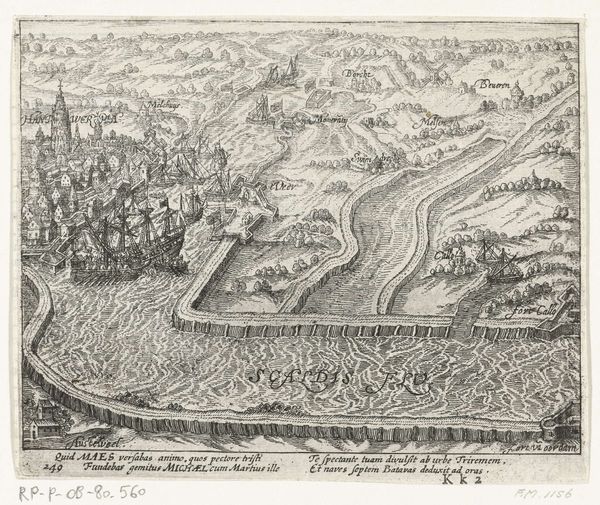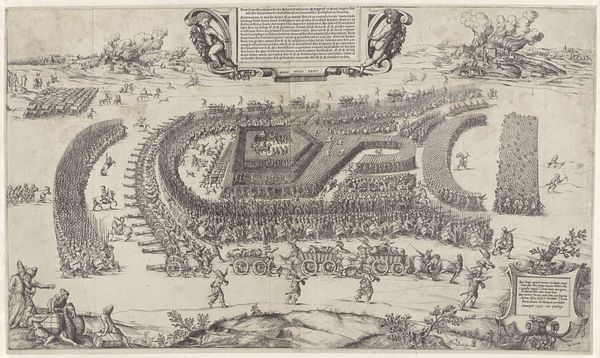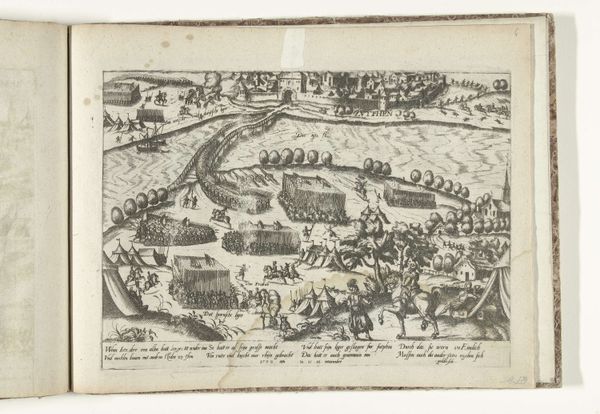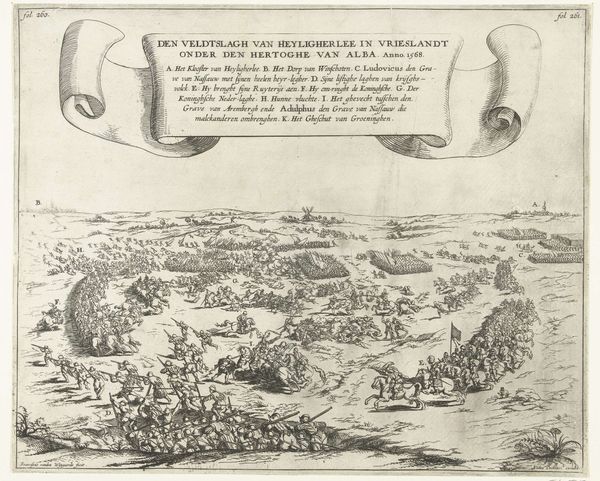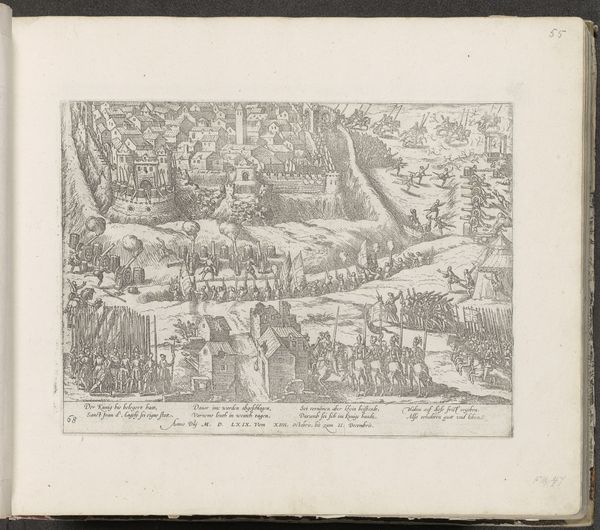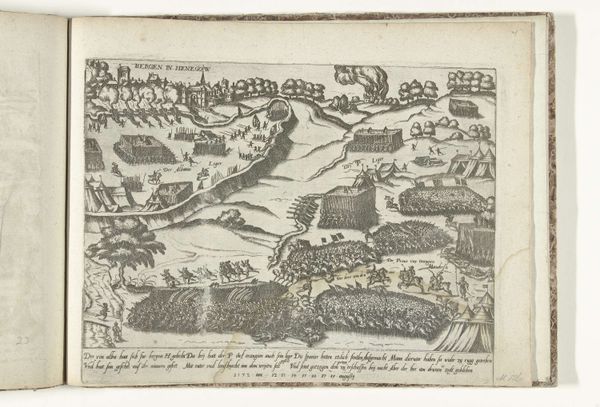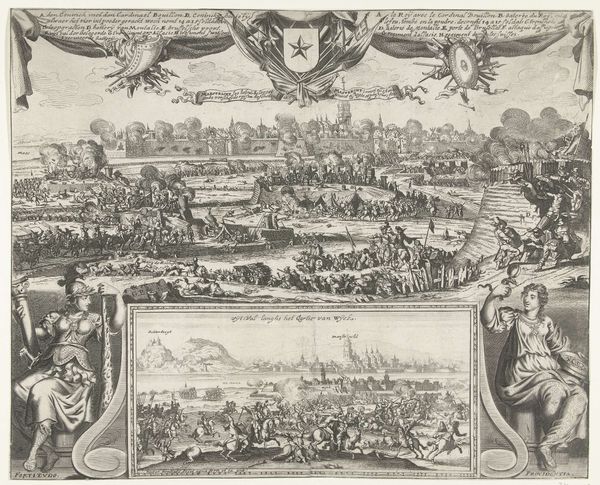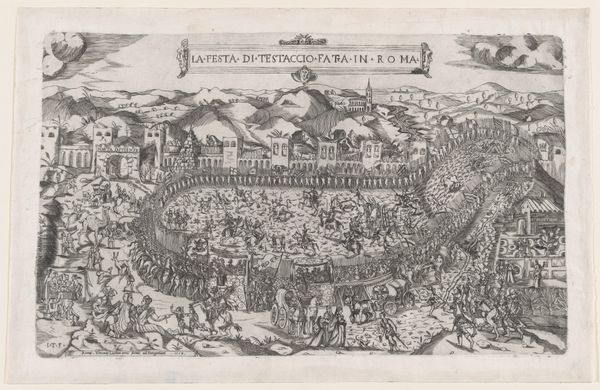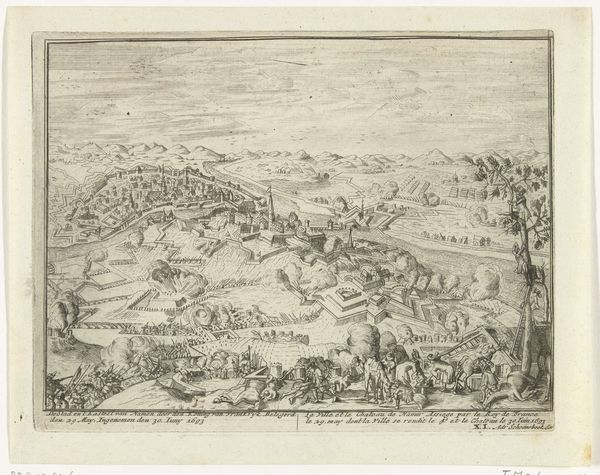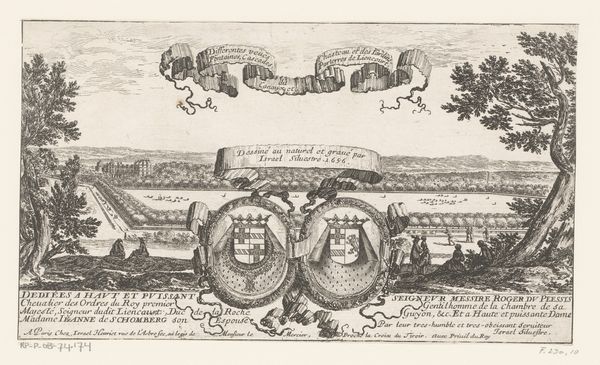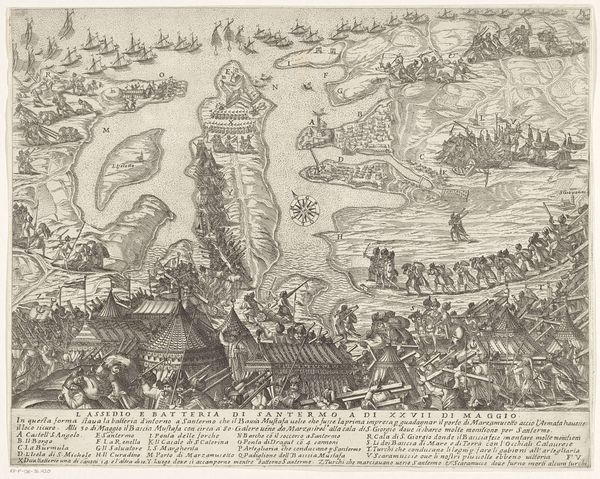
print, paper, ink, engraving
# print
#
figuration
#
paper
#
11_renaissance
#
ink
#
geometric
#
islamic-art
#
history-painting
#
engraving
Dimensions: height 400 mm, width 716 mm
Copyright: Rijks Museum: Open Domain
Sebastiano de' Valentinis created this print, "The Order of Battle of the Turkish Army," around the mid-16th century. It gives us a bird's-eye view of the Ottoman military formation. But this isn't just a neutral record; it's a product of its time, reflecting the anxieties and fascinations of Europe with the Ottoman Empire. Made in Italy, this print visualizes the imposing military power of the Ottomans. Consider the context. The Ottoman Empire was expanding, posing a direct threat to Europe. Prints like these were visual tools, feeding into both fear and a desire to understand the 'enemy'. The meticulous detail in the print—the arrangement of soldiers, artillery, and even supply lines—speaks to the European obsession with Ottoman strength. It also hints at the flow of information, accurate or otherwise. To truly understand this image, we need to dig into the history books, maps, and even diplomatic archives of the period. How did Europeans perceive the Ottoman Empire? What role did art play in shaping those perceptions? The answers lie in understanding the complex interplay of politics, culture, and artistic representation.
Comments
rijksmuseum about 2 years ago
⋮
In a time when there were no newspapers, prints were important disseminators of news. Depictions of special events, for instance a battle, were spread throughout Europe in print form. This imposing etching shows the Turkish army trekking through a ravaged landscape in a special order of battle. As a Catholic, Zobel was naturally interested in the ongoing conflict between the Christian world and the Ottoman Empire.
Join the conversation
Join millions of artists and users on Artera today and experience the ultimate creative platform.
